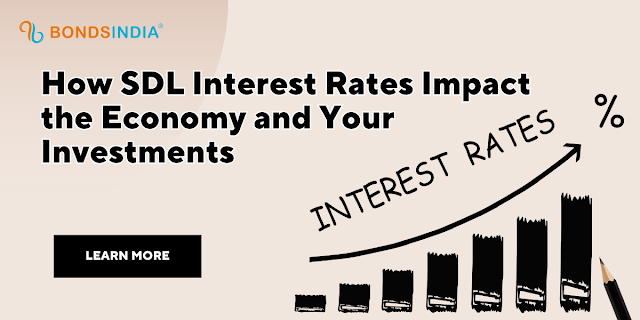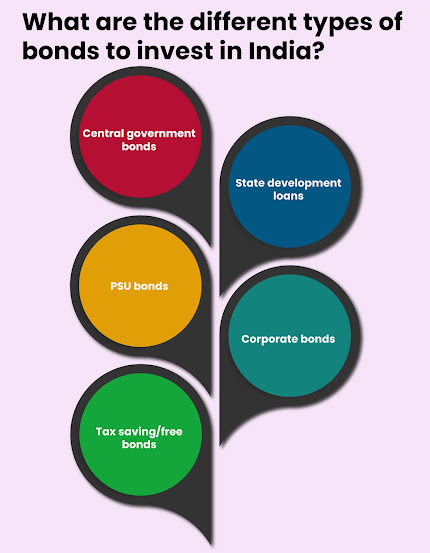How SDL Interest Rates Impact the Economy and Your Investments
Are you curious about the mysterious world of SDL interest rates and how they affect the economy and your investments? Look no further! In this blog post, we will explore the ins and outs of these crucial economic indicators, their impact on different sectors, and what it means for your personal finances. From government bonds to savings accounts, get ready to delve into the fascinating world of SDL interest rates. Let's start unraveling this complex topic together!
Introduction to SDLs
State Development Loans (SDLs) are debt securities issued by state governments in India. They are used to raise funds for infrastructure projects, social welfare schemes, and other government spending. SDLs are considered to be a safe investment because they are backed by the creditworthiness of the state government that issued them.
SDLs are typically issued in denominations of ₹100, ₹500, and ₹1,000. They have maturities ranging from 3 years to 30 years. SDLs pay interest on a half-yearly basis. The interest rate on SDLs is set at auction by the Reserve Bank of India (RBI).
SDLs can be purchased through a variety of channels, including:
The primary market: SDLs are issued in the primary market through auctions conducted by the RBI.
The secondary market: SDLs can be traded in the secondary market through stock exchanges such as the National Stock Exchange (NSE) and the Bombay Stock Exchange (BSE).
Direct from the state government: SDLs can be purchased directly from the state government that issued them.
SDLs are a good investment option for investors who are looking for a safe investment with moderate returns. They are particularly suitable for investors who are looking to invest in long-term government securities.
Here are some of the advantages of investing in SDLs:
They are backed by the creditworthiness of the state government that issued them.They offer a fixed interest rate, which provides investors with a guaranteed return on their investment.
They have a long maturity period, which means that investors can lock in their interest rate for a longer period of time.They are relatively liquid, which means that investors can easily sell them if they need to access their money.
Here are some of the disadvantages of investing in SDLs:
The interest rate on SDLs is typically lower than the interest rate on central government securities.
SDLs are not as liquid as central government securities, which means that it may be difficult to sell them if you need to access your money quickly.
The creditworthiness of state governments can vary, so it is important to do your research before investing in SDLs.
Overall, SDLs are a safe investment option with moderate returns. They are a good choice for investors who are looking for a long-term investment with a guaranteed return.
How Do SDL Interest Rates Affect the Economy?
State Development Loan (SDL) interest rates affect the economy in a number of ways. These effects can be both positive and negative.
Positive effects:
Higher SDL interest rates can help to reduce inflation. This is because higher interest rates make it more expensive for businesses to borrow money, which can lead to slower economic growth. This can help to bring down inflation, which is the rate at which prices are rising.
Higher SDL interest rates can also attract foreign investment. This is because foreign investors are attracted to countries with higher interest rates, as this means that they can earn a higher return on their investments. This can help to boost the economy by increasing the amount of money available for investment.
Negative effects:
Higher SDL interest rates can also make it more expensive for businesses to borrow money. This can lead to slower economic growth, as businesses may be less likely to invest in new projects or hire new workers.
Higher SDL interest rates can also make it more expensive for consumers to borrow money. This can lead to a decrease in consumer spending, which can also slow economic growth.
Overall, the effects of SDL interest rates on the economy are complex and can vary depending on the specific circumstances. However, in general, higher SDL interest rates can lead to slower economic growth, while lower SDL interest rates can lead to faster economic growth.
Impact of Changes in SDL Interest Rates on Investors
When the SDL interest rate increases, it becomes more expensive for banks to borrow money. This, in turn, affects how much banks are willing to lend to businesses and consumers. When lending rates increase, businesses and consumers have to pay more for loans, which can impact their ability or willingness to make large purchases. The higher cost of borrowing may also lead to increased defaults on loans, which can have a ripple effect throughout the economy.
As businesses and consumers struggle to meet their loan obligations, the banking sector may suffer losses that could lead to consolidation or downsizing. This could cause a decrease in the availability of credit, which would further impede economic growth. In addition to the direct impact on businesses and consumers, higher SDL interest rates can also indirectly affect investors. For example, if companies are struggling to repay their loans due to higher borrowing costs, they may cut back on their dividend payments or share repurchases.
This can lead to lower stock prices and reduced returns for investors. Higher SDL interest rates can also make it more difficult for companies to raise capital through debt financing. This could lead to increased equity issuance, which would dilute existing shareholders’ ownership stakes. Additionally, higher rates could make it more difficult for companies to service their debt obligations, leading to increased default risk and potential losses for investors.
Strategies for Dealing with Changes in SDL Interest Rates
When the SDL interest rate goes up, it affects the economy and your investments in a few ways.
1. The cost of borrowing money goes up. This includes things like credit cards, loans, and mortgages. If you have any debt, your monthly payments will go up.
2. The stock market usually goes down when SDL rates increase. This is because investors are worried about the higher cost of borrowing money and the effect it will have on companies' profits.
3. Your savings account interest rate will probably go up too. This is good news if you're a saver, but not so good if you're trying to grow your money quickly.
There are a few strategies you can use to deal with changes in SDL interest rates:
1. If you have debt, try to pay it off as quickly as possible. This will save you money in the long run, even if your monthly payments go up in the short term.
2. If you're investing for the long term, don't worry too much about short-term fluctuations in the stock market. Stick to your investment plan and remember that markets always go up and down over time.
3. If you're saving for a specific goal, consider using a high-yield savings account or CD (certificate of deposit). These accounts typically offer higher interest rates than regular savings accounts, so you can still grow your money even when SDL rates are rising.
Here are some additional factors to consider when assessing the impact of SDL interest rates on the economy:
The level of inflation: If inflation is high, then higher SDL interest rates may be necessary to bring it down. However, if inflation is low, then higher SDL interest rates may have a negative impact on the economy.
The state of the economy: If the economy is already weak, then higher SDL interest rates may further slow economic growth. However, if the economy is strong, then higher SDL interest rates may not have a significant impact.
The global economic environment: The impact of SDL interest rates on the economy can also be affected by the global economic environment. For example, if interest rates are rising in other countries, then this may make it more attractive for foreign investors to invest in India, which can boost the Indian economy.
It is important to note that the impact of SDL interest rates on the economy is not always clear-cut. In some cases, higher SDL interest rates may have a positive impact on the economy, while in other cases they may have a negative impact. The specific impact will depend on a number of factors, including the level of inflation, the state of the economy, and the global economic environment.




Comments
Post a Comment